My friends at Redtree Art Gallery and Coffee Shop made a bee for my cappuccino.


My friends at Redtree Art Gallery and Coffee Shop made a bee for my cappuccino.
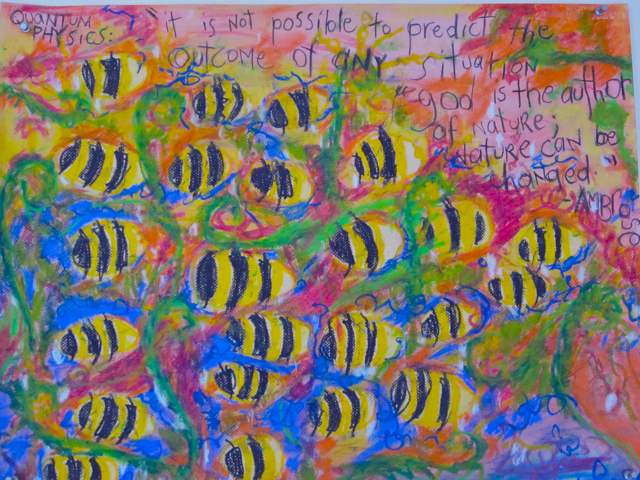

I’ve received a very nice invitation to Easter dinner on Sunday. And I’ve been invited to contribute a fruit salad to the meal. So I’ve been thinking about fruit salads and what makes a good one. I mean, most of them are pretty run-of-the-mill, right, Reader? What on earth can make you excited about a fruit salad?! So you understand my dilemma.
Well, I’ll tell you what can make a special fruit salad…HONEY! And good coconut. And good pecans. And whipped cream. So, my dear Reader, I’ve decided to whip up a wonderfully exuberant Ambrosia. Because Spring is exuberant. And Easter is exuberant. And all the world is exuberant. And the image above is not only exuberant in its colorful Easter-egg-like bees, but embedded in it is a quote from St. Ambrose, the patron saint of bees.
Legend has it that a bee landed on the infant St. Ambrose’s lip; when she flew off, she left a drop of honey on his mouth. When St. Ambrose’s father discovered the honey on his son, he took it as a sign that little Ambrose would grow up to speak gently and smoothly and with a honeyed tongue.
Reader, in this present election season, one in which our attentions have become riveted to hateful speech and vitriol and the power of language to do harm and raise ire, it’s good for us to recall the healing power of speaking gently and with a honeyed tongue. So St. Ambrose is my man this Easter. Therefore, dear Reader, I shall be making Ambrosia, a fruit salad named after our sweet-talking saint—a fruit salad with just a touch of honey…honey collected from my own bees.
Thanks to Francesca, the young artist who created this very exuberant pastel.
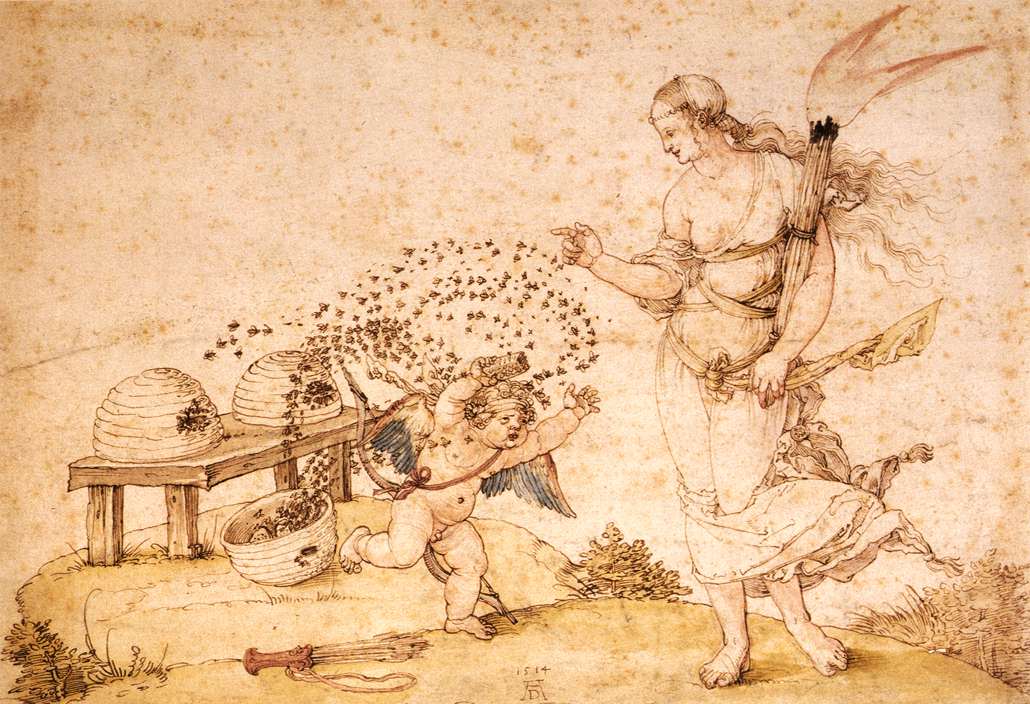
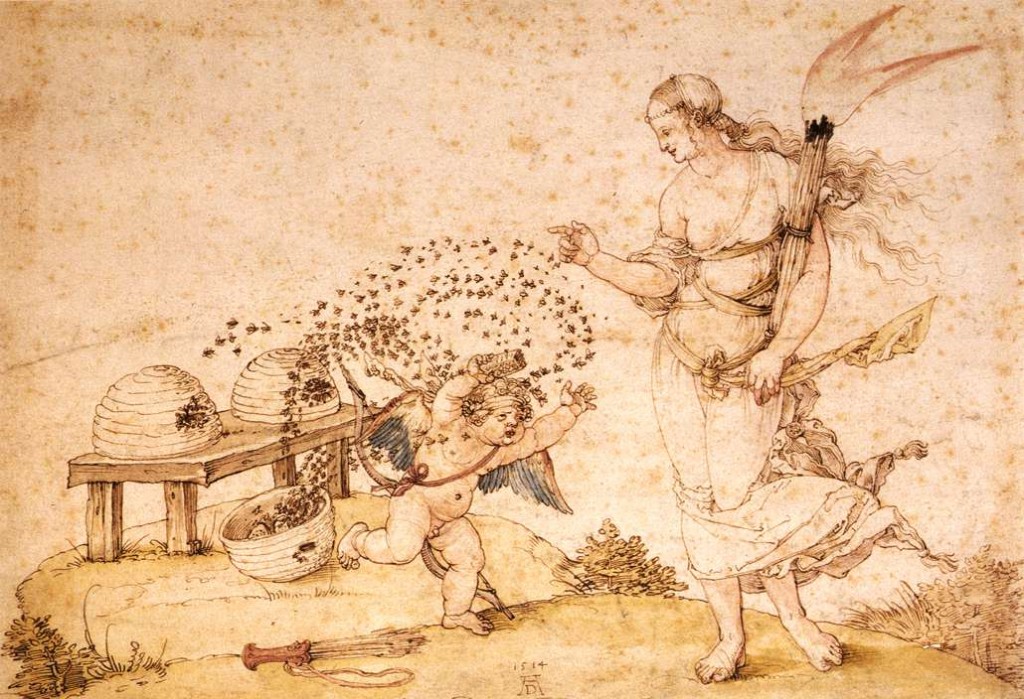
I love that, no matter what, Cupid WILL NOT let go of the honey here. :) And that’s Cupid’s unflappable mother, Venus, with him. As you can see, the calmer the person, the calmer the bees. It’s a good reminder not to run flailing around when things get tense in the bee yard. Be like Venus, friends. Though I have to say that I can certainly relate to Cupid. Something similar once happened to me. Years ago, I failed to use my smoker when I opened a hive…I thought I could quickly slip in there without notice. And in the midst of some angry bees on my unveiled face, I swatted my eyeglasses into the bushes near the beehives. I still haven’t found them.
I’ll also admit that after I slung my glasses into the woods, I ripped off my shirt and swatted it wildly around my head as I attempted to outrun the bees. It was an ugly event.
I do, however, love the reminder that if bees didn’t sting, it would be like keeping a box full of flies…and what on earth fun is that?!
Dear Reader, no doubt you know by now—now that you are where you are in your life—that there is no sweetness without pain. Happy Valentine’s Day.
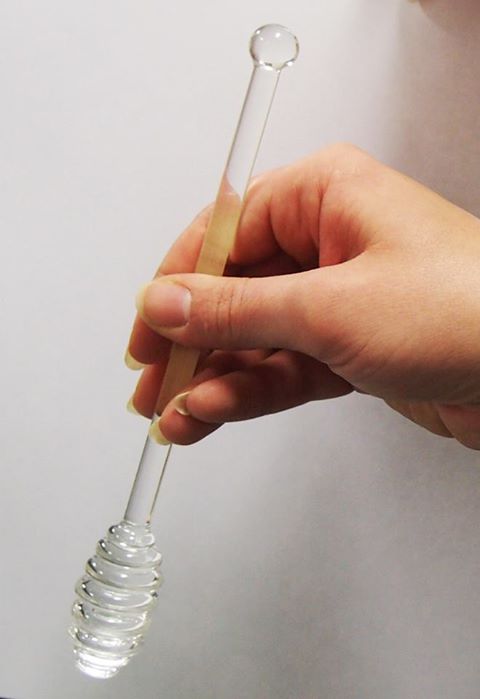
As if it were no big deal, Dorie Guthrie sat down next to me as I worked at Brazee Street Studios and created this elegant honey dipper from a stick of clear glass. As if from thin air. And fire.

I think this dipper might be lonely without its glass jar filled with honey, though, don’t you, Dorie? We all need important work to do.
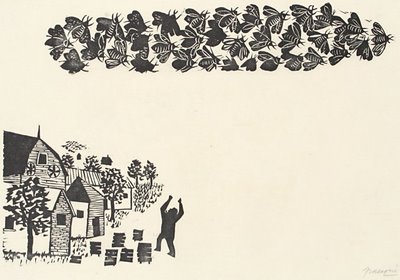
The minute I put that wax melter out in the sun, the sun disappeared. Then the temperatures dropped. And no wax on earth will melt at 70 degrees and under cloudy skies. So, we’ll try when the weather heats up again.
But doesn’t it feel great out there? Every single one of our windows is open, and I’m sitting here in a flannel shirt.
Which brings me to the solstice. Once the days begin to get shorter, the queen’s egg laying begins to slow, too. Which means that—even though it’ll still feel like summer around here for a few months—the hive begins to prepare for fall and winter. Conservation begins. Then, in January, when the winter solstice arrives and the days begin to be imperceptibly longer, and even though it feels as if the cold will never end and the earth will never thaw, the queen begins to gear up for egg laying again. She beings laying in earnest in February. The cycle of the hive is perfectly synced with the cycle of the sun.
No matter where you live or what your temperatures are like, your hive cycle depends not on temperature but on the length of the day.
And here’s what it feels like when your hive swarms in April, May, or June.

At first, I had this image filed under “Telling the Bees” because the beekeeper looks so distraught. Maybe that’s one reason I really love this piece…it fits many emotions.
